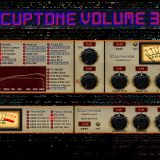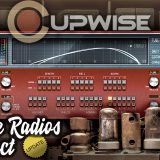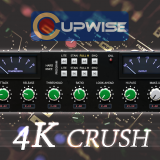Echo Chambers/Real Spaces IR Collection, Part Two
Another huge batch of real spaces/echo chambers, IR collection.
Product Description
NOTE- This product is a collection of standard IRs- reverb impulses that will work with any convolution plug-in that allows you to load your own impulses. My other products on this site are for use with Nebula, so if you don’t own Nebula be sure to stick to the Impulse Response Reverb category.
General Info
Five real spaces were sampled extensively, including multiple mic and/or speaker setups, and with alternate ‘bionic’ versions (described later), as well as up to five dynamic steps (different amounts of input drive used during sampling) available for everything. Altogether there are 167 impulses. 44.1khz, 48khz, 88.2khz, and 96khz sets are available for download to all purchasers. You should use the sample rate that matches your project when possible.
Be sure to check out the audio demos to hear these impulses in action!
The Spaces
Not one but two purpose-built echo chambers were used to produce two batches of impulses. These echo chambers were built at studios specifically for use as a reverb send. One has options for both a brighter version, and a duplicate set that was EQ’d to flatten the freq response (less bright). The other chamber was sampled with the door leading into it both opened and closed, which produced slightly different results.
There’s another batch of impulses that were sampled across various rooms of a small wood-floored house (same house that was used in part one of this series), with a stereo mic setup in the kitchen. Another batch of impulses was captured in a stairwell at a studio, with the mic at the top and speaker at the bottom of the stairs, and then another set with those positions swapped. The last set of impulses was made with the mic in the same stairwell but the speaker placed in an adjacent live room, producing a larger/more distant sound.
Sandman’s Den- This is the name I gave the first echo chamber, which has a gloriously big, smooth sound to it. The chamber is about 14 x 16 feet with an 8 foot high ceiling. It has a concrete floor, with concrete block walls. It was sampled with the door into the room both closed and open, open providing slightly less density and quicker decay. This incredible chamber was captured with a stereo mic setup. There’s a total of 30 impulses. This is the one that’s pictured on the first page of this manual.
Lancelot’s Tomb- This chamber is shaped like an ‘L’, with each ‘leg’ of the L being about 6 x 10 feet and 10 feet high. Some of the walls are concrete blocks, some are plaster on drywall, and some have bamboo over them for diffusion. It was sampled both with and without additional foam diffusers (filenames say “damp” when the diffusers are used, and “long” when not), providing two very different results. A mono mic was used. There are also options with and without an EQ that tames the brightness of this space (also labeled in filenames). This chamber is pictured below.
Across Wood Floored House- These impulses were made by placing the speaker in the main room of an empty (no furniture) house with wood floors, and a stereo mic setup across the house in the kitchen. 10 impulses total. Pictured below.
Studio Stairwell- 34 impulses total. Labeled “top” and “bottom” to indicate where the mic was placed. Speaker was always placed opposite. Pictured to the right.
Live Room+Stairwell- The same stairwell was used but this time in combination with an adjacent live room. There are both “close” and “far” options, with different placement of the speaker/mic. 33 impulses total.
Bionic Versions
The ‘bionic’ versions are extra options available for some of the spaces, which were sampled using a method I came up with. It involves running the sampling tones through the spaces at faster or slower than normal speed. This results in the frequency response being shifted up or down, as well as affecting the decay length. They still retain the main characteristic of the space. These alternate versions are worth checking out!
Dynamic Steps
The last part of the filenames is a number in parentheses. These are the different dynamic steps available for each sampled space. The (1) sample was sampled at the loudest input level going into the space, and the numbers going up from there were sampled at quieter levels. The difference in sound between these is usually subtle, but after you find the space IR you want to use you should try the dynamic steps to see if you prefer one. The lowest drive option may have some slightly noticeable noise towards the end of the reverb tail.
Organization, Editing
These impulses were all sampled at 32 or 24 bit, and have been meticulously edited for consistency. Expect a higher quality presentation than you would find in random free impulses you can find online. Every impulse filename includes information about what batch its from and other various details. Everything is explained in the included manual.
Be the first to comment on “Echo Chambers/Real Spaces IR Collection, Part Two”
This demo starts with the dry vocal, then each repeat after that is processed with different impulses from the collection. I didn't use every impulse in the collection but I did use many of them and I think I covered most of the variety you can expect in this collection.


















Comments
There are no comments yet, would you like to submit yours?